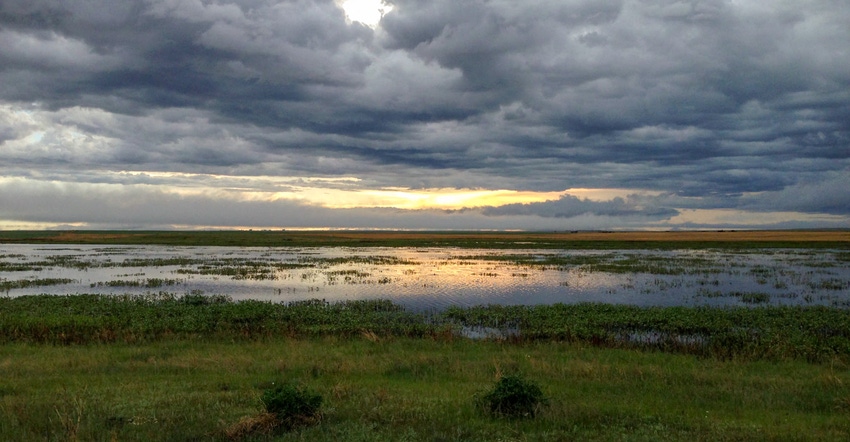
A new pilot program in the Prairie Pothole region offers payments for planting perennials for conservation use for three to five years.
The new Conservation Reserve Program is called the Soil Health and Income Protection Program (SHIPP). It is available to producers in North Dakota, South Dakota, Iowa, Minnesota and Montana. The sign-up is going on now and ends Aug. 21.
Producers have the option of three-, four- or five-year CRP contracts to establish perennial crops for conservation use on less-productive cropland in exchange for payments. SHIPP enables producers to plant perennial crops that will improve soil health and water quality while having the option to harvest, hay and graze them during certain times of the year.
Perennial cover, whether used in a single crop rotation or over multiple years, can improve the productivity of soils and soil health on a farm for generations and increase the bottom line for the farmer, according to USDA’s SHIPP fact sheet. Soil health, or soil quality, by definition, is the capacity of soil to function as a vital living ecosystem that sustains plants, animals and humans.
Eligible land
Land must meet the following criteria to enroll in SHIPP:
Be less productive land on the farm
Have been planted (and not in CRP) in crop years 2017, 2018 and 2019
Have a total of no more than 15% of the eligible land per farm enrolled in SHIPP
Recently expired CRP acres are not eligible for enrollment.
Payments
Generally, payments will be made at 50% of the weighted average soil rental rate using the county average rental rate. The rate for beginning, limited resource, socially disadvantaged, and veteran farmers and ranchers will be 75%, according to USDA.
Cost share is only available to beginning, limited resource, socially disadvantaged, and veteran farmers and ranchers for practice establishment.
Using the land
Land enrolled in SHIPP may be hayed or grazed outside the primary nesting season with no reduction in the payment, provided adequate stubble height of the cover is maintained to protect the soil as specified in the conservation plan.
In exchange for a 25% reduction of the annual rental payment, and not being eligible to be insured or reinsured under the Federal Crop Insurance Act, the land may also be harvested for seed outside the primary nesting season as specified in the conservation plan.
“We are excited to provide a short-term Conservation Reserve Program option tailored to the unique soil health needs of producers in the Prairie Pothole region,” says Richard Fordyce, Farm Service Agency administrator. “The number of acres that can be enrolled in the program is limited [to 50,000], and participation will be on a first-come, first-served basis. Interested landowners should act now by contacting their FSA county office for an appointment to apply.”
Visit FSA online for more information or contact your FSA local office.
USDA Service Centers are currently open for business by phone appointment only, and field work will continue with appropriate social distancing. All Service Center visitors wishing to conduct business with FSA, the Natural Resources Conservation Service or any other Service Center agency are required to call their Service Center to schedule a phone appointment. More information can be found online.
USDA provided information for this article.
About the Author(s)
You May Also Like






